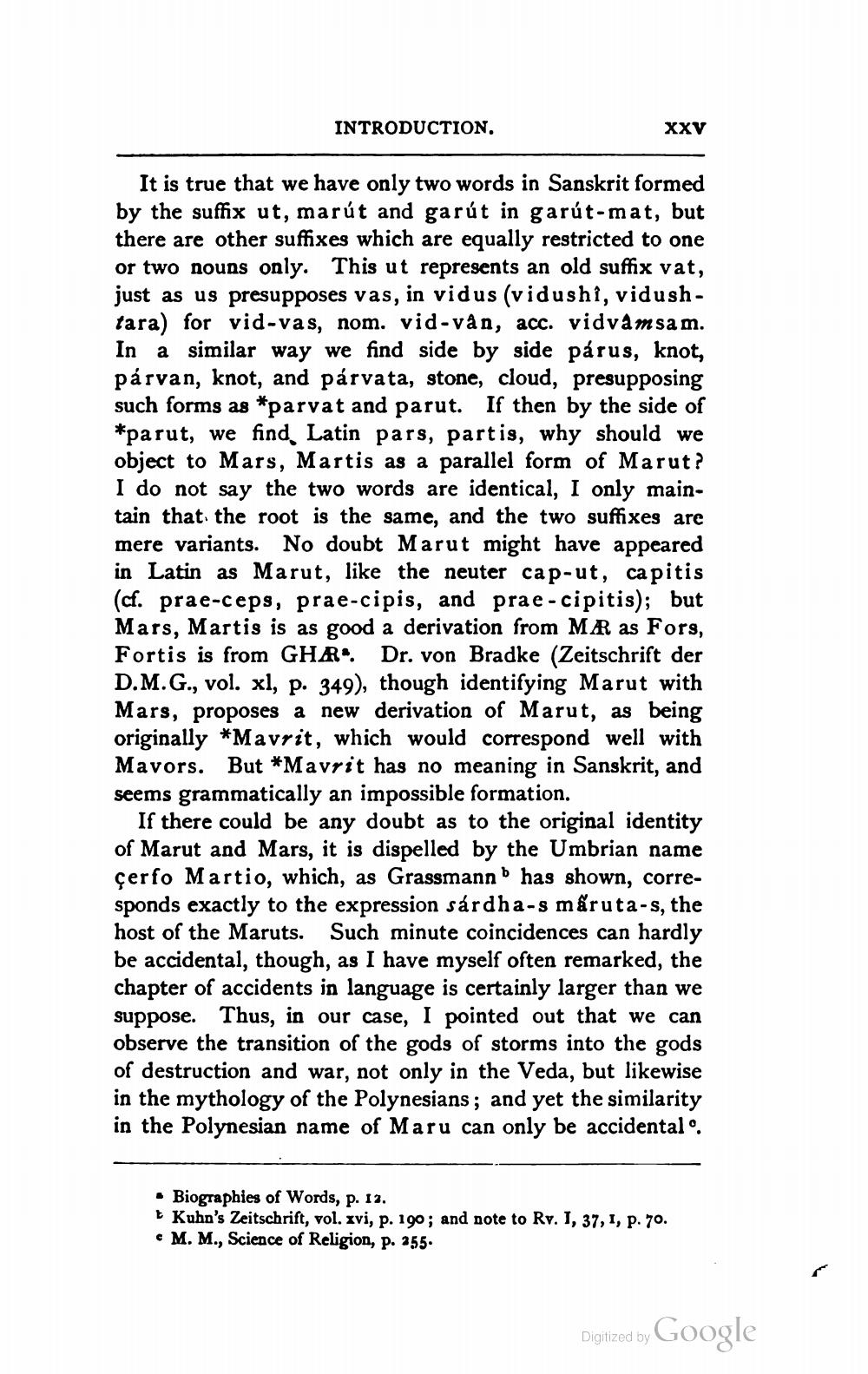________________
INTRODUCTION.
XXV
It is true that we have only two words in Sanskrit formed by the suffix ut, marút and garút in garút-mat, but there are other suffixes which are equally restricted to one or two nouns only. This ut represents an old suffix vat, just as us presupposes vas, in vidus (vidushi, vidushtara) for vid-vas, nom. vid-vân, acc. vidvamsam. In a similar way we find side by side párus, knot, párvan, knot, and párvata, stone, cloud, presupposing such forms as *parvat and parut. If then by the side of *parut, we find Latin pars, partis, why should we object to Mars, Martis as a parallel form of Marut? I do not say the two words are identical, I only maintain that the root is the same, and the two suffixes are mere variants. No doubt Marut might have appeared in Latin as Marut, like the neuter cap-ut, capitis (cf. prae-ceps, prae-cipis, and prae- cipitis); but Mars, Martis is as good a derivation from MR as Fors, Fortis is from GHA. Dr. von Bradke (Zeitschrift der D.M.G., vol. xl, p. 349), though identifying Marut with Mars, proposes a new derivation of Marut, as being originally *Mavrit, which would correspond well with Mavors. But *Mavrit has no meaning in Sanskrit, and seems grammatically an impossible formation.
If there could be any doubt as to the original identity of Marut and Mars, it is dispelled by the Umbrian name çerfo Martio, which, as Grassmann has shown, corresponds exactly to the expression sárdha-s maruta-s, the host of the Maruts. Such minute coincidences can hardly be accidental, though, as I have myself often remarked, the chapter of accidents in language is certainly larger than we suppose. Thus, in our case, I pointed out that we can observe the transition of the gods of storms into the gods of destruction and war, not only in the Veda, but likewise in the mythology of the Polynesians; and yet the similarity in the Polynesian name of Maru can only be accidental".
Biographies of Words, p. 12.
Kuhn's Zeitschrift, vol. xvi, p. 190; and note to Rv. I, 37, I, p. 70. e M. M., Science of Religion, p. 255.
Digitized by Google




